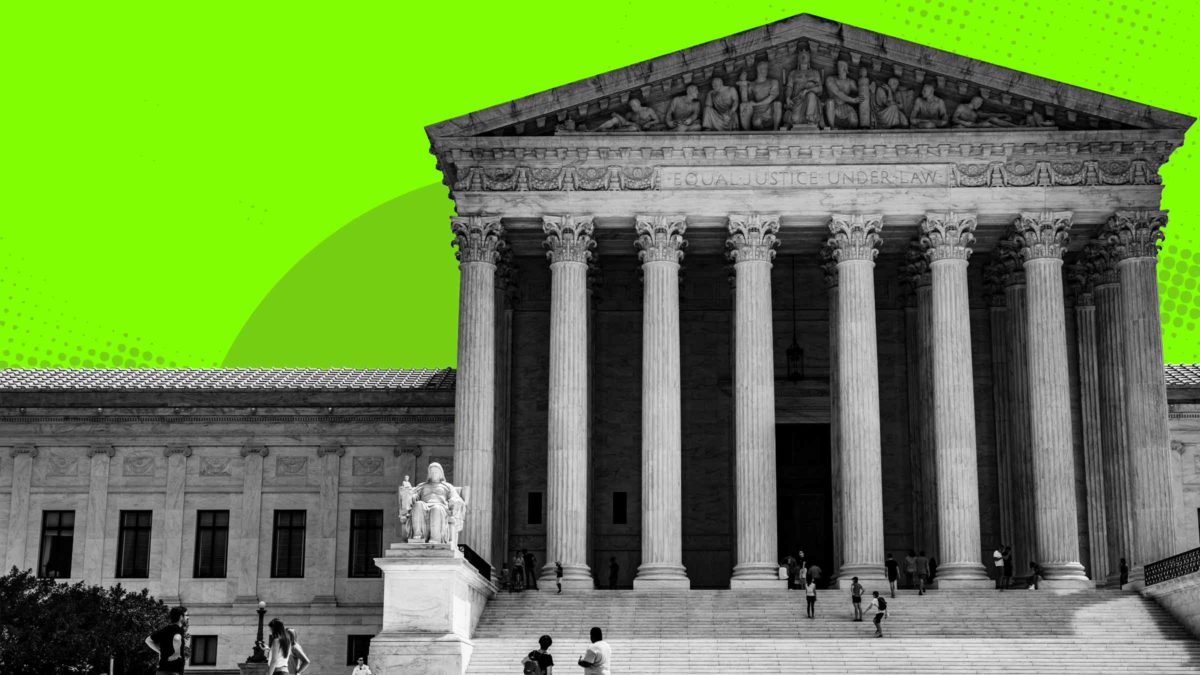If Kenneth Smith’s trial happened today, he wouldn’t be on death row. In 1996, an Alabama jury voted 11-1 to sentence Smith to life in prison, but spared him of the death penalty. A judge overrode the verdict and sentenced him to death instead.
Twenty-one years later, Alabama outlawed judicial override. It was the last state to do so, and the practice is no longer allowed anywhere in the United States. As a group of judges argued in a friend-of-the-Court brief supporting the appeal of an individual sentenced to death by judicial override, “a sentence of death emanating from the considered judgment of twelve lay jurors… more reliably represents the community’s moral values and conscience than one imposed by a single judge.”
This week, the Supreme Court held that the state could execute Smith anyway. Justices Sonia Sotomayor, Elena Kagan, and Ketanji Brown Jackson dissented.
Smith’s was the fourth execution greenlit by the Court last week. It also gave the go-ahead for the executions of Murray Hooper, Stephen Barbee, and Richard Fairchild on its shadow docket. Each one of these cases had troubling constitutional issues. Nevertheless, the Court allowed the executions to move forward without fully hearing the parties’ arguments. Unless the Court intervenes in Missouri’s plan to execute Kevin Johnson later this month, November will be the month with the highest number of state executions since 2015.
The attorneys for Fairchild, who was sentenced to death in Oklahoma for murdering his girlfriend’s 3-year-old son in 1996, unsuccessfully argued that his execution was cruel and unusual in violation of the Eighth Amendment because he suffered from delusions due to schizoaffective disorder. This decision undermined the Court’s own precedent: In 2002 in Atkins v. Virginia, the Court held that executing someone with intellectual disabilities constitutes cruel and unusual punishment because their “deficiencies…diminish their personal culpability.” A board-certified psychologist found that Fairchild suffered from “significant neuropsychological impairment.” And Fairchild’s attorneys and prison officials reported that his mental state had further deteriorated to the point of not at all understanding the circumstances of his execution. But still, the Court allowed Oklahoma to execute Fairchild anyway without a new competency hearing and did so without comment.
Hooper’s case showed a breakdown of the protections afforded by Brady v. Maryland, a 1963 case where the Court held that prosecutors have a duty to share exculpatory information with defendants in a timely manner. Hooper, who was convicted in Arizona of murdering two people in 1982, claimed that the prosecutors in his case engaged in misconduct when they did not divulge that the state’s only witness failed to identify Hooper in a lineup. The state revealed this key fact 40 years after Hooper’s conviction, but insisted on executing him anyway without a new trial. Arizona did so last Wednesday after the Court denied Hooper’s request.
When it comes to people sentenced to death, the Court has not even enforced its most recent precedents. Earlier this year, the Court ruled in Ramirez v. Collier, a case about Texas’ capital punishment protocols, that people on death row have a right to a priest’s touch prior to execution if their religious convictions motivate that desire. Despite this decision, the Texas prison system has not rewritten its policies regarding the religious rights of people on death row and continues to decide whether to allow physical touch from a priest on a case-by-case basis.
That’s why Stephen Barbee, who was convicted of murdering of his ex-girlfriend and her 7-year-old son in 2006, had to request that the priest administering his final rites be allowed to hold his hand. Texas, however, only agreed to allow the priest to touch a “lower extremity” after the state strapped him to a gurney. It killed Barbee without honoring his final request to have his religious rights honored.
The Court is the last backstop for people sentenced to death looking for a second chance at a fair trial. The justices summarily deny most appeals from people on death row, despite the irreversible outcome. After a Court denies the appeal of a person sentenced to death, the only remaining option for stopping their execution is a grant of executive clemency, which are also very rare.
The Court allowed Smith’s execution to move forward despite Alabama’s history of botched killings. On Thursday, Alabama temporarily paused Smith’s execution after failing to find the proper IV lines for lethal injection. The New York Times reported that executioners tried to insert a line into “several locations” before calling Smith’s death off due to the expiration of his death warrant. Alabama has a history of troubled executions, including when the state sliced into Joe Nathan James’ arm—a “cutdown”—in order to kill him after struggling for hours to access his veins. According to Austin Sarat, a professor of jurisprudence and political science at Amherst College, around 3 percent of executions in the U.S. result in “unnecessary agony” or reveal gross incompetence of the executioner. The method most likely to do so is lethal injection.
With each execution that the Court approved this week, the constitutional rights of people sentenced to death withered away. This Court seems to be done with preserving legal protections for people on death row. Once a person is sentenced to death, very little can reverse that course.

